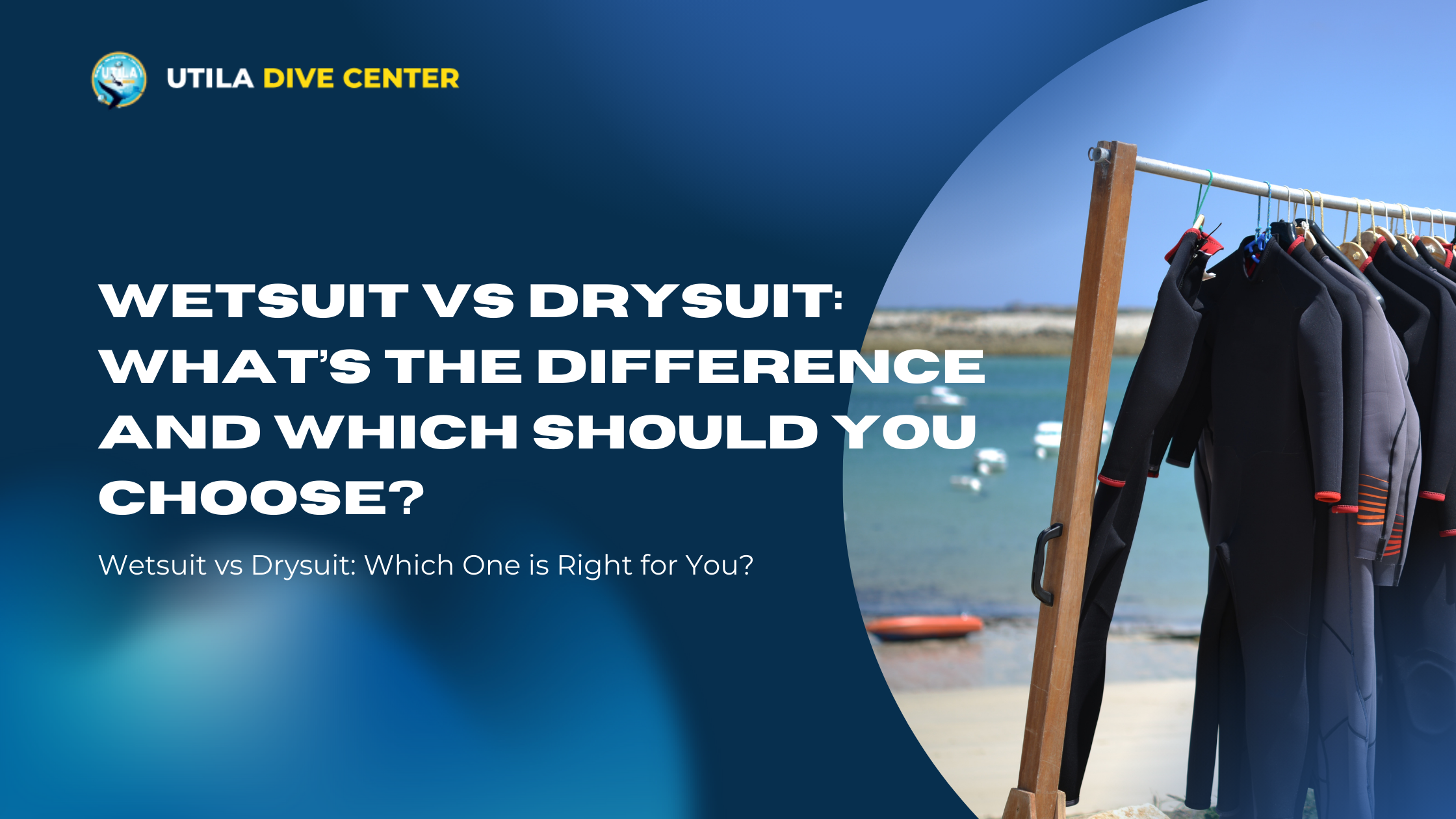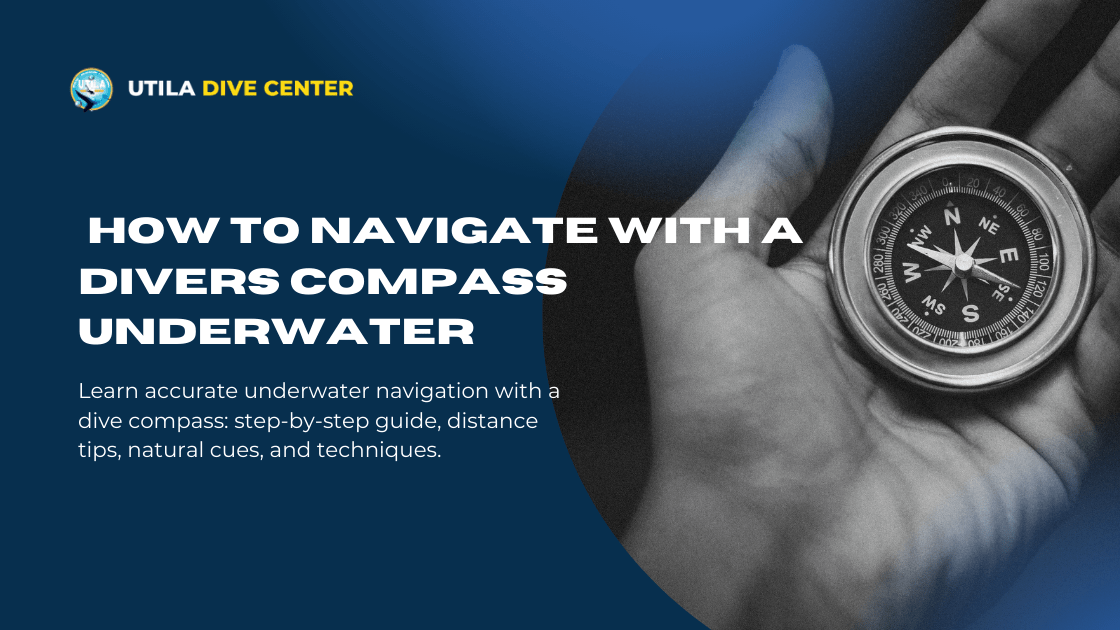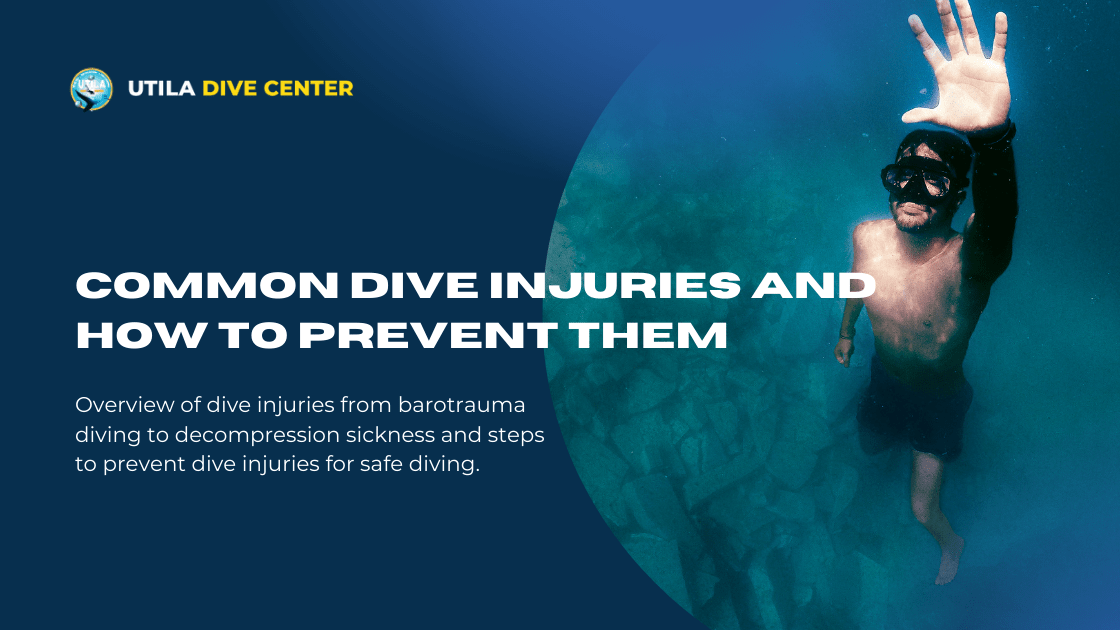
Wetsuit vs Drysuit: What’s the Difference and Which Should You Choose?
Wetsuit vs Drysuit: Which One is Right for You?
By: Manny Lagos | Date: 2024-11-26T06:22:28.059Z
When it comes to diving, nothing beats the joy of gearing up and entering the world under the waves. But let’s face it– comfort is key to making the most of your diving experience and choosing the right suit is a huge part of that. If you've ever thought about why some divers go for sleek wetsuits while others use more heavy-duty drysuits, you’re not alone.
Picking between wetsuits vs drysuits is one of the most important decisions you’ll make, and each has its own advantages depending on the dive location, water temperature, and what feels right for you.
So whether you’re aiming for a PADI Divemaster certification or just getting your feet wet, knowing the difference between a drysuit and a wetsuit is super important. By the end of this blog, you’ll have a good idea of which one suits you the best.
Ready to jump in?
Overview: Wetsuits and Drysuits
What is a Wetsuit?
Think of a wetsuit as your shield against cold waters, designed to keep you warm and cozy as you dive. Here’s how it works: the wetsuit traps a thin layer of water between your skin and the neoprene (a flexible, insulating material). Once you're in, a bit of water seeps in through the cuffs, but don’t worry– because that’s exactly what it’s supposed to do. Your body heats up this trapped water, creating a warm protective layer that keeps you comfortable and warm even in chilly ocean waters.
The best part is that wetsuits fit snugly against your body and create a “second skin” effect. This allows you to explore the underwater world without feeling the bite of the cold.
Common Uses:
Wetsuits are a top choice for all kinds of water sports like– surfing, snorkeling, swimming, and paddleboarding because they strike just the right balance between insulation and flexibility. They keep you comfortable in warm waters without holding you back letting you enjoy every second underwater.
What is a Drysuit?
True to its name, a drysuit is all about keeping you dry– even in the coldest waters. Unlike wetsuits, which let in a thin layer of water for warmth, drysuits use watertight seals around the wrists, neck, and ankles to keep every single drop out.
This design creates an insulating layer of air inside the suit, and many divers add more thermal layers underneath to stay extra cozy. Yes, drysuits can feel a little bulkier than wetsuits, but that added insulation lets you stay comfortable even in ice-cold waters.
Common Uses:
If you’re planning to jump into really cold waters, like the Arctic, the North Atlantic, or some deep, icy lakes, a drysuit is just what you need. They’re also a popular choice among technical and deep-sea divers, thanks to the warmth they provide on longer dives.
Moreover, drysuits are extremely useful for professionals, like marine biologists and underwater researchers, who need to stay warm on extended underwater missions. With a drysuit, you’re good to dive in waters as cold as 28°F (-2°C). Pretty amazing, right?
Key Differences Between a Wetsuit and a Drysuit
Insulation and Temperature Regulation
The major difference between wetsuits and drysuits lies in how exactly they keep you warm. A wetsuit works by trapping a thin layer of water between your skin and the suit, which then warms up from your body heat. In warm to moderate water temperatures, this suit works well. But, in chilly waters, this insulation doesn’t hold up for long.
A drysuit, on the other hand, works a little differently. It keeps you completely dry with snug seals around your wrists, neck, and ankles. If you’re someone who tends to get cold easily, a drysuit could be a game-changer, giving you much-needed comfort in cold waters.
Material and Construction
Wetsuits are made from neoprene, a lightweight and flexible material that’s great at keeping you warm. The thickness of the neoprene can vary according to how much insulation you require, so a thicker suit means more warmth. They’re also easy to wear, and once you’re in, they act like a second skin cutting down on drag as you dive underwater.
Drysuits, however, are made of waterproof materials like crushed neoprene, or trilaminate. This gives you a strong, water-tight seal but also makes the suit a bit heavier than a wetsuit. Drysuits also come with valves to adjust the air inside, letting you control buoyancy, which is super helpful for deeper or technical dives!
Who Should Buy a Wetsuit vs a Drysuit?
Choosing between wetsuit vs drysuit really boils down to where you’re planning to dive, what your diving goals are, and what feels comfortable for you.
Wetsuit Buyers: If you’re going to places like the Caribbean or Southeast Asia, where the waters are warm and tropical then getting a wetsuit is a good choice. They’re flexible, lightweight, and budget-friendly, making them perfect for beginners and vacation divers.
Drysuit Buyers: If you’re planning on exploring colder waters, a drysuit is the better option. Technical divers and researchers will love the added warmth and protection. While they can be comparatively costlier and require some training, drysuits are perfect for longer dives in chilly conditions.
So, think about where you're diving and what you want to get out of it, and you'll find your perfect underwater fit in no time!
Pros and Cons of Wetsuits and Drysuits
Now that we’ve covered the basics of wetsuits vs drysuits, let’s check out the pros and cons of each to help you figure out which one will work best for you.
Wetsuit Pros
- Comfortable and Lightweight: Wetsuits are easy to wear and fit like a second skin.
- Budget-Friendly: Wetsuits generally cost less than drysuits, making them affordable for divers of all levels.
Wetsuit Cons
- Limited Insulation: Not exactly the best choice for cold waters as they may not keep you warm for long.
- Durability: Neoprene can lose its elasticity and insulating power over time, which means regular replacements.
Drysuit Pros
- Ultimate Warmth: Drysuits are designed to keep you dry and comfortable, even in icy waters.
- Durable and Long-Lasting: Made from durable materials, drysuits can tackle intense weather conditions, making them a top pick for most technical divers.
Drysuit Cons
- Higher Cost: Drysuits tend to be more expensive and require regular maintenance.
- Less Flexibility: They’re bulkier, so movement can feel a bit restricted.
Conclusion: Wetsuit vs Drysuit - Which One is Right for You?
Choosing between a wetsuit and a drysuit is all about where and how you’ll be diving. For warm, tropical waters, a wetsuit is perfect– it’s lightweight, flexible, and comfortable. But if you’re diving into colder waters, a drysuit is a smart choice. It will keep you dry and warm throughout your adventure.
At Utila Dive Centre (UDC), we can help you find the perfect diving gear and train you to use it, no matter where you’re planning to dive!
So if you’re ready to take the plunge, contact us today, and let’s get started!

Rebreather Diving: Everything You Need to Know
Rebreather diving offers longer, quieter dives. Discover how it works, its benefits, risks, gear, and what you need to get started with rebreather diving.
Read more
12 Rules of Scuba Diving All Divers Must Follow
We've curated a list of 12 rules of scuba diving to help you stay safe, protect marine life, and enjoy your underwater adventures with confidence.
Read more
How to Navigate With a Divers Compass Underwater
Learn accurate underwater navigation with a dive compass: step-by-step guide, distance tips, natural cues, and techniques.
Read more
Common Dive Injuries and How to Prevent Them
Overview of dive injuries from barotrauma diving to decompression sickness and steps to prevent dive injuries for safe diving.
Read more